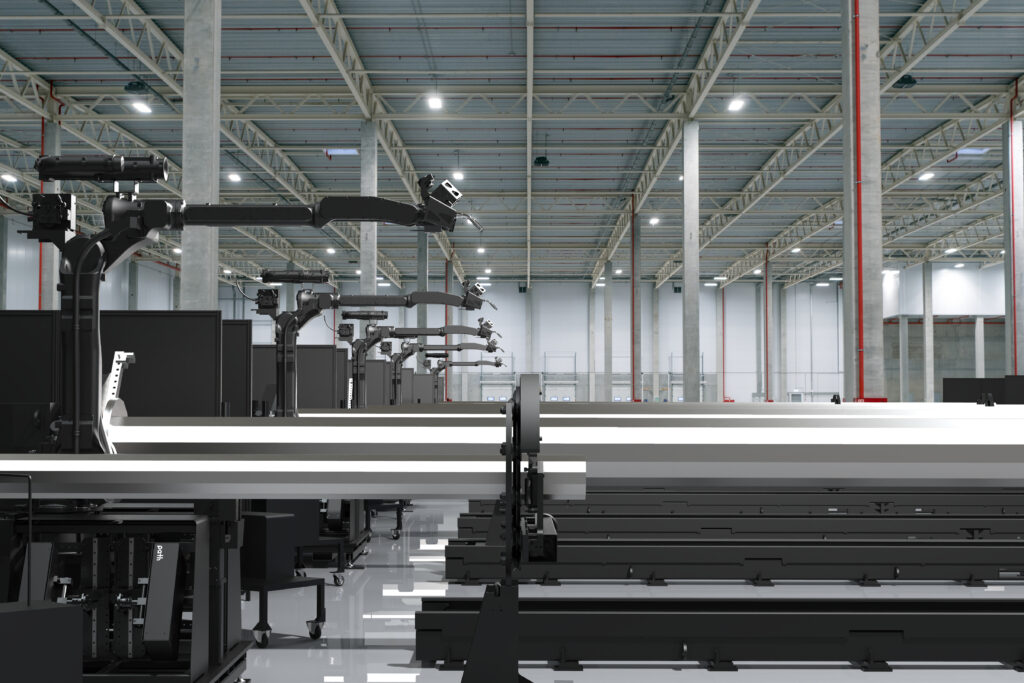White Paper: Three real-life examples of robotic welding manufacturers reaping the rewards of AI-robotics
Abstract:
The introduction of robotic welding into the manufacturing world several decades ago solved some problems, but also introduced new ones; the need for a programmer, perfect parts and fixtures, and other challenges. However, today’s robotic welding cells are armed with vision systems and artificial intelligence that have revolutionized welding technology and are true solutions.
Introduction:
Welding is a critical process in manufacturing and with over 400,000 welding jobs going unfilled in 2024, automation is becoming more and more important–important for survival. Robotic welding automation has been around for years in the form of traditional robots, and more recently, cobots, but this new generation of vision-based AI technology allows shop floors to run more autonomously.
Enhanced Productivity:
Robotic welding systems offer unmatched productivity gains compared to manual welding methods. Company A added a vision-based, AI-driven robotic welding system to their shop floor in 2023 to tackle large parts. Their AW-3 cell from Path Robotics started off welding at a steady clip, but saw a sharp increase in productivity due to their system’s artificial intelligence learning and adapting. The cell reached 50,000 inches of weld in a month and is on track to increase performance well beyond that. All on a single shift with no weekends.
Company B was previously welding 40 seams a day manually. Once their AW-3 cell was up and running, they executed 42 seams out of the box, but with software updates and artificial intelligence-based machine learning, they recently welded a record 76 seams in one shift. Nearly double. As they add their second shift, this will double again.
With automation, repetitive tasks are performed swiftly and consistently, significantly reducing cycle times and increasing throughput, all with improved quality. Moreover, robots can operate 24/7 without fatigue, leading to continuous production and optimized resource utilization and throughput. This ensures timely delivery of products to your customers, meeting market demands effectively.
Precision Welding:
AI-based networks learn to control the robotic welding equipment with a high degree of precision and adaptability. This ensures that welds are consistent and meet the specified quality standards, reducing defects and enhancing overall product quality, even when you don’t have perfect parts.
Since integrating an AF-1 robotic cell into their production, Company C has seen a significant decrease in rework. This speaks to the system’s ability to learn.
Worker Safety:
Safety is paramount in any manufacturing environment, and robotic welding systems prioritize worker safety. Welding can be a hazardous task due to exposure to heat, fumes, arc flashes, and other hazards. AI-powered robotic welding systems help mitigate these risks by allowing human operators to remain out of harm’s way. This reduces the likelihood of injuries and improves overall workplace safety. Another added benefit is consistent compliance with safety standards: AI can be trained to adhere strictly to safety protocols and standards. The robotic system then ensures that each weld is performed in accordance with established safety guidelines, minimizing the risk of accidents that could compromise the well-being of human workers.
Conclusion:
Robotic welding offers a multitude of benefits that elevate productivity, quality, and safety to unprecedented levels. By combining automation and advanced technology, businesses can streamline operations, drive down costs, and increase capacity, thereby gaining a competitive edge in today’s fast-paced market landscape. Embracing modern robotic welding is not merely an investment in machinery; it is an investment in the sustainability of manufacturing enterprises.
*Company names have been redacted for privacy. Click here for a robotic welding demo.

Click here for a robotic welding demo.
References:
- International Federation of Robotics (IFR) – https://ifr.org/
- American Welding Society (AWS) – https://www.aws.org/
- Robotic Industries Association (RIA) – https://www.robotics.org/
- Manufacturing Technology Insights – https://www.manufacturingtechnologyinsights.com/
